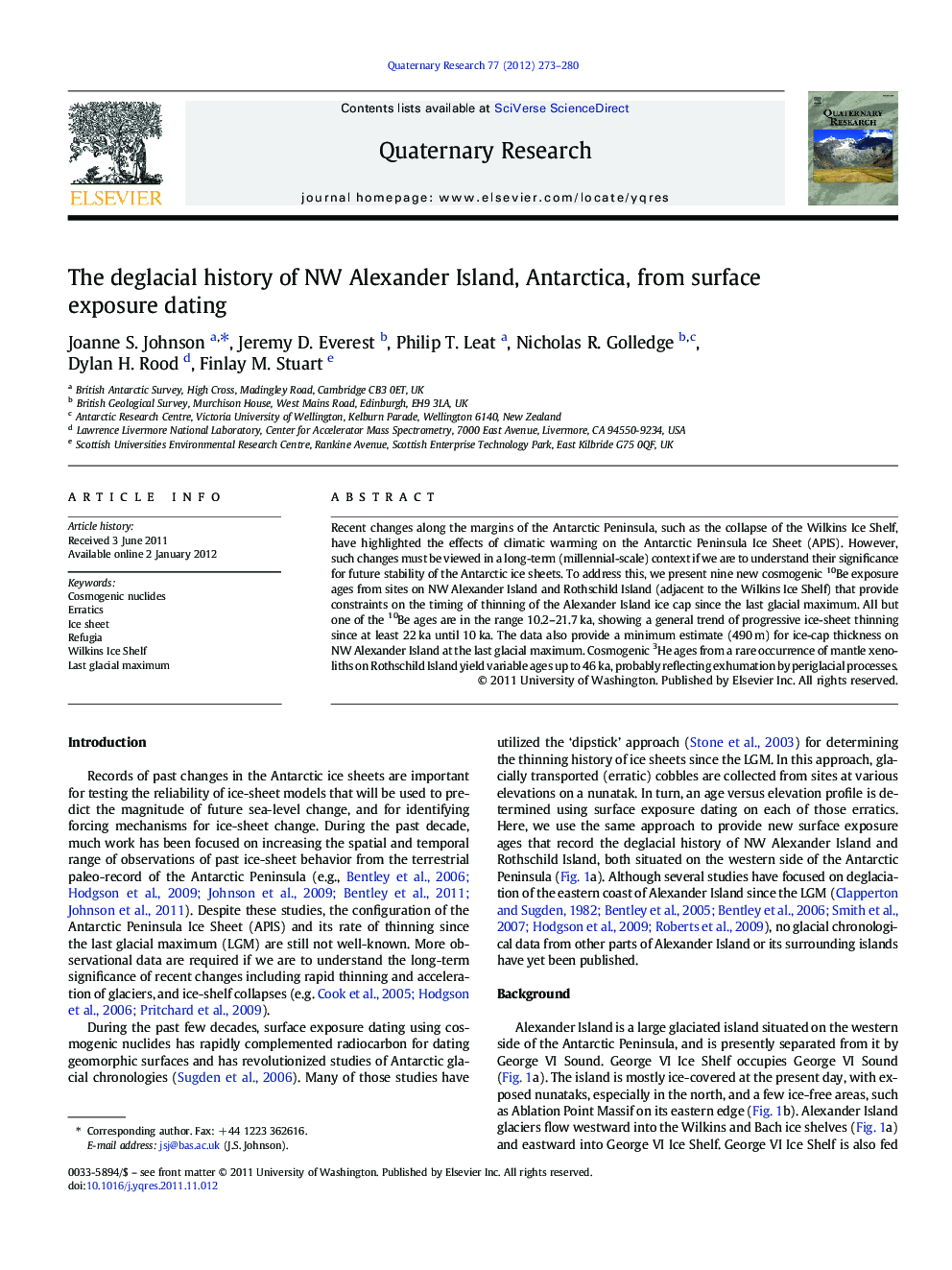| Article ID | Journal | Published Year | Pages | File Type |
|---|---|---|---|---|
| 1045670 | Quaternary Research | 2012 | 8 Pages |
Recent changes along the margins of the Antarctic Peninsula, such as the collapse of the Wilkins Ice Shelf, have highlighted the effects of climatic warming on the Antarctic Peninsula Ice Sheet (APIS). However, such changes must be viewed in a long-term (millennial-scale) context if we are to understand their significance for future stability of the Antarctic ice sheets. To address this, we present nine new cosmogenic 10Be exposure ages from sites on NW Alexander Island and Rothschild Island (adjacent to the Wilkins Ice Shelf) that provide constraints on the timing of thinning of the Alexander Island ice cap since the last glacial maximum. All but one of the 10Be ages are in the range 10.2–21.7 ka, showing a general trend of progressive ice-sheet thinning since at least 22 ka until 10 ka. The data also provide a minimum estimate (490 m) for ice-cap thickness on NW Alexander Island at the last glacial maximum. Cosmogenic 3He ages from a rare occurrence of mantle xenoliths on Rothschild Island yield variable ages up to 46 ka, probably reflecting exhumation by periglacial processes.
